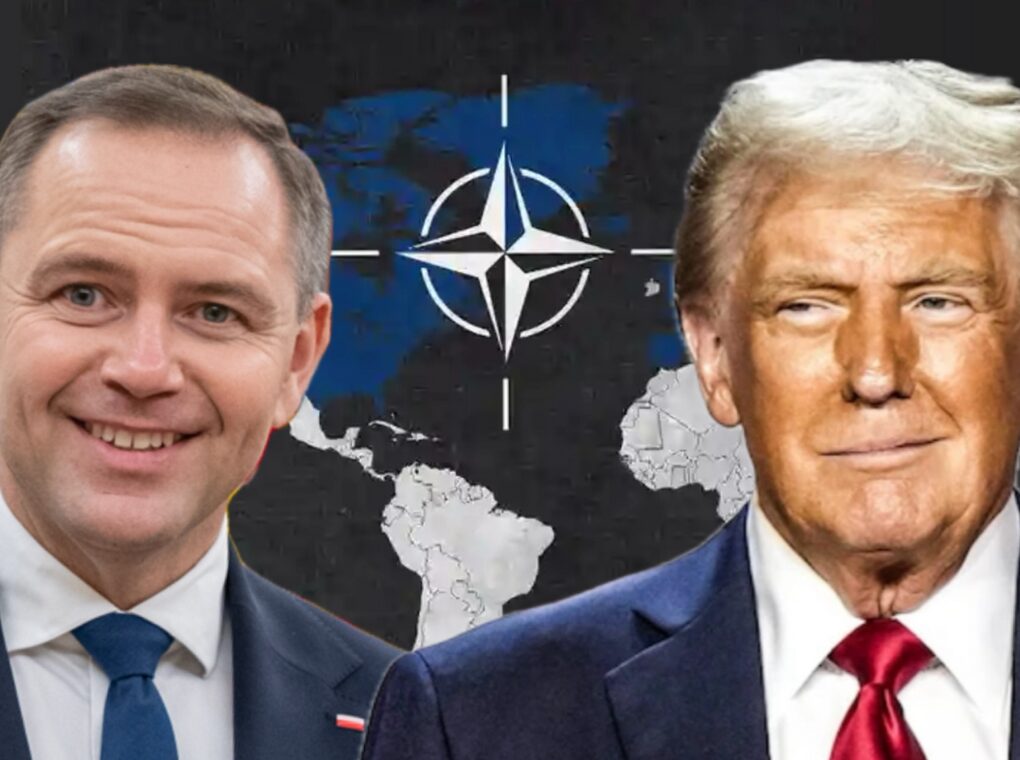Poland’s new president, Karol Nawrocki, will make his first official foreign trip next month to meet U.S. President Donald Trump at the White House on September 3. This high-profile visit comes just weeks after Nawrocki, a conservative historian backed by Poland’s nationalist Law and Justice party and directly endorsed by Trump during his campaign, was sworn into office following a narrow election victory over his pro-EU rival. The head of the President’s Cabinet, Pawel Szefernaker, announced Nawrocki’s meeting with Trump on X.
“In an official congratulatory letter delivered on the day of his swearing-in, US President Donald Trump invited Polish President Karol Nawrocki to the White House for an official working meeting on 3 September 2025,” wrote Szefernaker. The meeting is expected to focus on bilateral relations, security cooperation and NATO, as Warsaw aims to strengthen its strategic partnership with Washington.
The meeting is expected to focus on three key areas:
Bilateral relations: Both leaders signal an intent to deepen political and security cooperation, with Nawrocki’s campaign having emphasized enhanced transatlantic partnership as a top priority.
NATO and regional security: With the war in Ukraine ongoing and rising tensions along Poland’s border with Belarus, both governments are likely to discuss the role of the U.S. as a guarantor of Central European security, military cooperation, and NATO burdensharing.
Strategic autonomy and domestic politics: Nawrocki’s presidency, representing a turn toward nationalist and Euroskeptic positions, sets the stage for a potential recalibration of Poland’s foreign and domestic policy orientation.
Can U.S. Bring Lasting Peace in Poland?
Many conservative politicians in Poland welcomed Trump’s policy, even despite the US president’s clashes with Ukraine and President Volodymyr Zelenskyy. Former Polish Prime Minister, Mateusz Morawiecki in an interview in March said that “Without the Americans, it is difficult to imagine a lasting peace, and yet we all strive for it,” He added that “without American support we in Europe would not have been able to maintain peace for decades”. Former Polish President Andrzej Duda expressed similar sentiments in an interview “Today my conclusion is absolutely unequivocal, there is no one but the United States who can stop Putin,” He added “That is why I believe that President Donald Trump, through his determination, can end this war,”. Duda was the first international leader to visit Donald Trump at the White House after his inauguration in January.
A key backdrop is Trump’s visible support for Nawrocki’s campaign, including a pre-election Oval Office meeting where Trump offered public endorsement. This diplomatic alignment signals shared conservative priorities such as skepticism toward the euro, strict immigration policy, and cautious support for deeper EU or NATO integration for neighboring Ukraine.
However, Polish public opinion remains ambivalent. While a strong majority recognizes the U.S. as a vital security partner, only 31% rate Polish-American relations as “good,” and belief in the U.S. as a positive force in world affairs is at a historical low. The symbolism of Nawrocki’s choice for his first trip—Washington rather than Brussels—also highlights an intent to distance Polish policy from EU orthodoxy.
“Model NATO Ally”
Key figures from the Trump administration have praised Poland’s policies, including the country’s commitment to security spending and migration policy. In February, US Secretary of Defence Pete Hegseth described Poland as a “model NATO ally” after a meeting with his Polish counterpart Władysław Kosiniak-Kamysz.
In turn, Secretary of State Marco Rubio expressed similar sentiments in a statement. “Poland and the United States stand together as partners in building a safer and more prosperous future for our peoples,” he wrote. “We look forward to further strengthening our cooperation on energy security.” “Our shared future has never looked brighter,” Rubio added.
Nawrocki’s engagement with Trump marks a decisive chapter in Poland’s foreign policy, with both leaders expected to send strong signals about the future of transatlantic ties, the trajectory of NATO on the Alliance’s eastern flank, and the evolving balance between sovereignty and integration within Europe.
